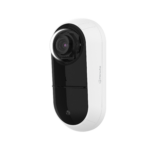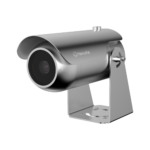2022.10.17
AI boosts security capabilities
AI boosts security capabilities

Interview by Seung-In Noh, Head of Hanwha Techwin AI lab
Artificial intelligence (AI) is becoming more mainstream and less conspicuous as it continues to permeate more areas of our lives. At the same time, customers are demanding AI solutions that offer more detailed insights and specialized features.
In the last couple of years, the video surveillance industry has seen huge advancements in AI systems. As AI technology becomes more widely used in the future, security solutions that apply AI will be reimagined in various new ways.
Q1. Can you tell us about Hanwha Techwin AI lab?
Established in 2019, the Hanwha Techwin AI Lab is dedicated to and specializes in AI-related development. Hanwha Techwin had been conducting research on how to apply AI to security solutions. As AI technology has become a crucial facet of the security industry, the need for a group that specializes in researching and developing that technology has grown.
The Hanwha Techwin AI Lab doesn’t simply adopt commercialized AI technology, but rather designs optimal products and customer solutions using the company’s self-developed AI algorithms. Also, with the development of AI technology, we are working to provide customized solutions to meet the specific needs of our customers.
Q2. Can you explain Hanwha Techwin’s AI applications?
Hanwha Techwin has made several advances in AI to make it more affordable and available on a broader range of products.
Edge AI – For the video security industry, video data is collected into the system through the camera. The process of artificially filtering and processing this data on the camera itself is called edge computing. With this, large amounts of data are processed and handled in the camera before the refined data is sent to the server level. This edge computing infrastructure reduces potential strains on resources and minimizes the time required to analyze server data.
Hanwha Techwin’s edge AI technology also enables the AI camera to independently analyze video feeds and transform them into meaningful data before sending it to the server. For that reason, edge AI is a core technology that improves the AI video security system’s overall operations and efficiency.
WiseDetector – The WiseDetector feature is based on machine learning. It enables the users to program the device to self-learn and identify/detect objects according to set parameters based on individual user needs. This technology provides customized solutions based on project and environmental requirements.
COVID-19 Solution The Wisenet Occupancy Monitoring Application combines the many features Hanwha AI cameras offer with people counting for precise monitoring of occupancy levels. This application displays a red “Wait” message along with the number of people currently inside to help operators abide by social distancing policies when the maximum occupancy of an area is reached. When numbers are below the threshold, a green “Welcome” message is displayed.
The Wisenet Face Mask Detection Application can help organizations protect their staff and visitors by identifying uncovered or partially exposed faces. The Wisenet AI camera is ideal for object detection and classification using attribute analytics. This can detect if people are wearing/not wearing a face mask in real time. If a person enters an area without a face mask or is improperly wearing a face mask, the system pushes a notification to a compatible VMS or NVR.
The Wisenet Social Distancing Detection Application effectively complies with social distancing guidelines by monitoring the presence of people and calculating their proximity to the next person in public spaces. Cameras placed in key locations throughout a facility or outdoor space can detect distancing violations (violations of preset distance) and trigger an instant event alert on connected NVRs/VMSs. They can also send out instant alarms to the said individuals through speakers or other connected alarm devices.
Vertical specialized AI solution – The Wisenet Road AI can quickly analyze not only the vehicle’s type, color and license plate, but also the brand and model. The system can quickly find the vehicle at the scene of a traffic accident based on the vehicle’s unique characteristics. For instance, if the user queries vehicle details on the system such as “A Brand’s B series, black,” the AI can show the location and the time of the vehicle that fits the description. If several cameras are connected, the route that the vehicle traversed can be determined and recorded.
End to end AI solution – Hanwha Techwin has comprehensive solutions that include cameras that apply AI technology, as well as video recorders and VMS. Metadata collected from AI cameras enables the forensic search of object information including personal details such as age, sex, clothing color, the presence of eyeglasses or vehicle details like type and color.
In addition, Hanwha Techwin’s AI NVR can be used with Hanwha Techwin’s non-AI cameras to enable search for information that might not be initially available on the camera, such as person, vehicle, face and license plate.
Q3. Can you share your opinion about global AI trend?
The prominent global AI trend is the advancement of edge AI. Compared to the past, when Edge AI technology revolved around detecting objects and extracting each object attribute, AI technology has been developing toward high-level AI function, driven by the advancement of performance in NPU (Neural Network Processing).
NPU is a neural processing device that imitates the human brain’s network and can learn like a brain does. It is an AI semiconductor that can simultaneously process multiple forms of data, such as video, voice, text, and image.
TOPS, which is short for Trillion Operation Per second, is a tool used to evaluate the performance of AI chips, meaning it is the number of computing tasks that one chip can process in one second. Therefore, the higher the TOPS, the greater the number of tasks a chip can process. Simply stated, a higher TOPS means higher efficiency.
Only a few years ago, NPU had a TOPS functional performance of 1-2, but now NPUs are being launched with TOPS higher than 20. Those are then installed into the Edge.
With the gradual enhancement of the NPU performance, the system will surpass existing Edge AI performance. It will be installed with functions that can analyze and detect abnormal behavior to alert the user. Users will be able to utilize various AI algorithms by installing them into the Edge.
To assess the AI trend from a wider conceptual point of view, AI is being applied to various industrial areas in the form of applications. The essentials for establishing an AI system are AI model (algorithm), computing resources, and data. Apart from the pure hardware resources of the three, algorithm and data are closely related. In the end, since algorithms begin with the usage of database, the future global AI trend will be determined by continuous collection and learning of data, along with what kind of competitive data can be produced by processing those data.
Q4. Hanwha Techwin’s AI vision
As mentioned, the use of AI will be expanded across verticals, with customer needs becoming more detailed and differentiated as edge AI continues to advance. Hanwha Techwin will develop AI algorithms that can be used in each user’s unique environment while providing the algorithm in various applications.
Moreover, the key will lie in the tremendous amounts of metadata collected based on AI technology, and we will need to consider how to prepare and utilize the data. Data will pile up in various ways, and how the data is processed can determine whether or not that data is valuable to the user.
Hanwha Techwin will secure this data through our AI vision and take a further step to provide practical insight to customers while providing AI-based solutions that can deliver processed information to help customers make their final decisions.


